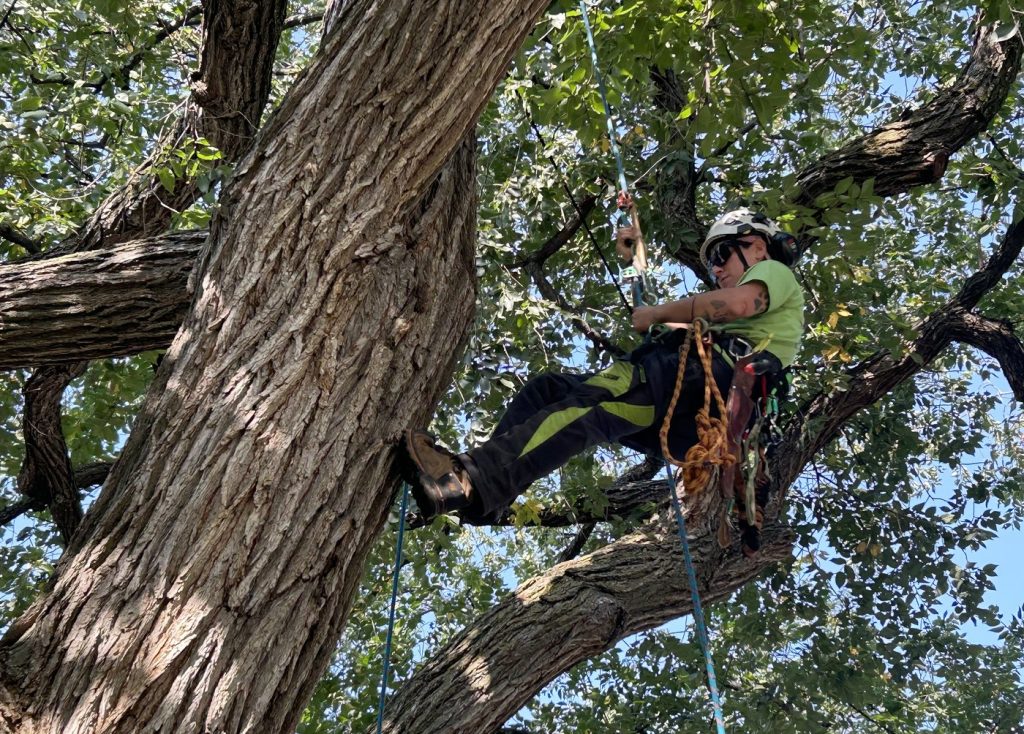‘Challenges every single muscle’: Champion tree climber turns work into passion

WINNIPEG — Climbing up trees, wrangling with ropes and navigating twisted odd-angled limbs may not be everyone’s idea of a great day.
But it is to Jordyn Dyck, who has turned her job as an arborist into a passion leading to international tree-climbing competitions.
“(In my) mid-20s, I had tried a bunch of different jobs — mostly labour-intensive ones — and just nothing was really fulfilling my soul in the way that I kind of needed. And then somebody told me you could climb a tree (for work), and that felt like a good path to follow,” she said while trimming a large oak towering over a two-storey home in west Winnipeg.
Advertisement
“I think my favourite part is that it’s so hard. It’s impossible to kind of perfect it. You have to be mentally strong, physically strong. You’ve got to have a good understanding of biology and physics and angles and forces … every day is a new puzzle to solve.”
Dyck was urged several years ago by her boss at Trilogy Tree Services to enter competitions. Now in her 30s, she has racked up an impressive number of wins, most recently at the annual Prairie Chapter Tree Climbing Championship last month in Calgary.
That secured her a spot in an international championship next year in New Zealand. Later this year, she’s headed to another international event in the United States.
Tree climbing is hard work, she said.
It was evident as she demonstrated throwing a line over a large limb, climbing more than 10 meters up and walking along limbs without getting snarled by leaves and sharp branches.
Advertisement
“It’s definitely the most difficult thing I’ve ever done physically, for sure. It just challenges every single muscle in your body every day.”
Competitions can test every facet of an arborist’s skill set. It’s not just about speed — competitors earn points in a series of events that focus on accuracy, safety and other factors.
Climbers can be required to toss throwlines at targets set up in a tree. They may also have to simulate work duties, such as using a handsaw or pole pruner while high in the air. There is also a simulated aerial rescue, where competitors have to safely get another person down from a tree.
Points can be deducted for anything from an unsafe manoeuvre to breaking a tree limb.
Dyck figures the tallest tree she has climbed competitively was about 23 metres in Tennessee. Tackling the giant Redwoods along the Pacific Coast is on her “bucket list.”
Advertisement
Her passion prompted her to get a tattoo on her back of the tree used in her employer’s logo.
“I tell everybody that this job has made me the best version of myself. I’ve been pushed every day to find a new best that I can.”
This report by The Canadian Press was first published Sept. 14, 2024.
Steve Lambert, The Canadian Press
Advertisement